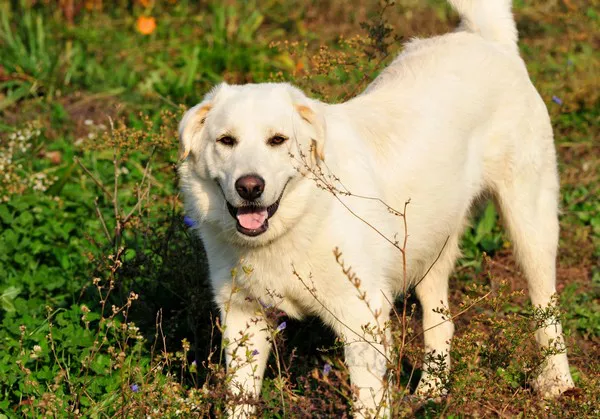For those in awe of majestic white dogs with an air of nobility, the Akbash and Great Pyrenees breeds often share a place in the spotlight. However, discerning between these two remarkable breeds is essential for potential owners seeking a furry companion that best suits their lifestyle. In this guide, we’ll unravel the distinctive traits that set Akbash and Great Pyrenees dogs apart, helping you make an informed choice.
1. Origin and History:
Akbash: Originating in Turkey, the Akbash dog was primarily bred for guarding livestock. Their history as working guardians is reflected in their strong protective instincts and independent nature.
Great Pyrenees: Hailing from the Pyrenees mountains of France, Great Pyrenees dogs also have a history of guarding livestock. They are known for their dedication and loyalty to their charges.
2. Size and Build:
Akbash: Generally slightly leaner and more agile than the Great Pyrenees, Akbash dogs have a well-defined and athletic build. They stand at around 28 to 34 inches (71 to 86 cm) in height at the shoulder.
Great Pyrenees: These dogs are larger and more robust, with a heavier frame. They typically stand at 25 to 32 inches (63 to 81 cm) at the shoulder.
3. Coat Texture and Color:
Akbash: The Akbash coat is typically short to medium in length, and the coat lies closer to the body. Their coat is predominantly white, aiding in their ability to blend with livestock.
Great Pyrenees: Great Pyrenees dogs have a dense double coat that offers protection from various weather conditions. Their coat comes in various shades of white, often with patches of badger, gray, or tan.
4. Temperament and Behavior:
Akbash: Akbash dogs are known for their assertive and protective nature. Their independence might come across as aloofness, but they form deep bonds with their families and are dedicated guardians.
Great Pyrenees: Great Pyrenees dogs are affectionate and gentle with their families. They tend to be more sociable and gentle in their interactions, while still being protective of their surroundings.
5. Interaction with Other Pets:
Akbash: Due to their guardian heritage, Akbash dogs may be more reserved or cautious around unfamiliar animals. Proper socialization is essential to ensure they coexist harmoniously with other pets.
Great Pyrenees: Great Pyrenees dogs are generally more accepting of other pets and animals, thanks to their history of working alongside various livestock.
6. Vocalization and Alertness:
Akbash: Akbash dogs tend to be less vocal than Great Pyrenees dogs. They are more likely to use body language and controlled assertiveness to address potential threats.
Great Pyrenees: Great Pyrenees dogs are known for their vocal nature, often barking to alert their families of perceived dangers.
7. Living Environment:
Akbash: While Akbash dogs can adapt to various living environments, they thrive in settings where their guardian instincts can be put to use, such as in rural areas or homes with large yards.
Great Pyrenees: Great Pyrenees dogs are equally adaptable and can do well in different settings, but their tendency to bond closely with their families makes them well-suited for family environments.
8. Grooming Requirements:
Akbash: Akbash dogs have a shorter coat that requires less maintenance compared to the Great Pyrenees. Their coat sheds moderately and regular brushing can help keep it in good condition.
Great Pyrenees: The dense double coat of the Great Pyrenees requires more frequent grooming. They shed heavily, especially during shedding seasons, and regular brushing is necessary to prevent matting and keep their coat healthy.
9. Training Approach:
Akbash: Training an Akbash dog requires patience, consistency, and an understanding of their independent nature. Positive reinforcement techniques work well, but they may require more time to learn and follow commands.
Great Pyrenees: Great Pyrenees dogs are intelligent and eager to please, making them relatively easier to train. They respond well to positive reinforcement and reward-based training methods.
10. Lifespan and Health Considerations:
Akbash: The lifespan of Akbash dogs generally ranges from 10 to 12 years. As with any breed, responsible breeding practices, proper care, and regular veterinary check-ups contribute to their overall health and longevity.
Great Pyrenees: Great Pyrenees dogs have a similar lifespan, averaging around 10 to 12 years. Regular health check-ups, a balanced diet, and exercise are key factors in ensuring their well-being.
11. Adoption and Rescue:
If you’re considering adding an Akbash or Great Pyrenees dog to your family, adoption and rescue options are worth exploring. Many dogs of both breeds are in need of loving homes, and adopting a dog in need can be a rewarding experience.
Conclusion: Recognizing the Uniqueness of Each Breed:
In conclusion, the differences between Akbash and Great Pyrenees dogs extend beyond their appearance. While both breeds share guardian roots and a dedication to their families, their distinct temperaments, behaviors, and physical characteristics set them apart. Understanding these differences is essential in selecting the breed that aligns with your preferences and lifestyle.


